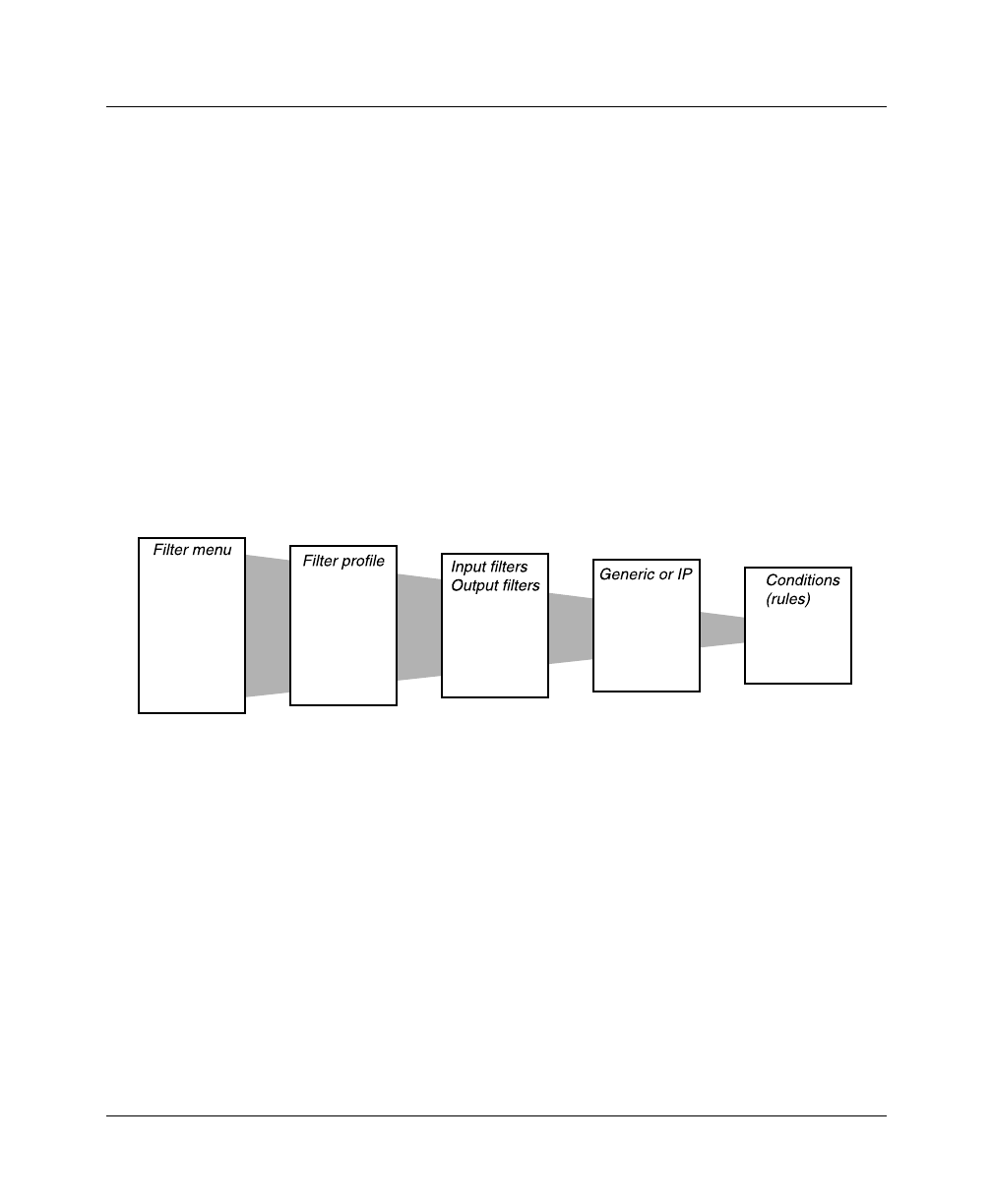User`s guide
Table Of Contents
- Ascend Customer Service
- How to use this guide
- What you should know
- Documentation conventions
- How to use the on-board software
- Manual set
- Configuring WAN Connections
- Configuring IP Routing
- Introduction to IP routing on the Pipeline
- Managing the routing table
- Parameters that affect the routing table
- Static and dynamic routes
- Configuring static routes
- Specifying default routes on a per-user basis
- Enabling the Pipeline to use dynamic routing
- Route preferences
- Viewing the routing table
- Fields in the routing table
- Removing down routes to a host
- Identifying Temporary routes in the routing table
- Configuring IP routing connections
- Ascend Tunnel Management Protocol (ATMP)
- IP Address Management
- Connecting to a local IP network
- BOOTP Relay
- DHCP services
- Dial-in user DNS server assignments
- Local DNS host address table
- Network Address Translation (NAT) for a LAN
- Configuring IPX Routing
- How the Pipeline performs IPX routing
- Adding the Pipeline to the local IPX network
- Working with the RIP and SAP tables
- Configuring IPX routing connections
- Configuring the Pipeline as a Bridge
- Defining Filters and Firewalls
- Setting Up Pipeline Security
- Pipeline System Administration
- Pipeline 75 Voice Features
- IDSL Implementations
- APP Server utility
- About the APP Server utility
- APP Server installation and setup
- Configuring the Pipeline to use the APP server
- Using App Server with Axent SecureNet
- Creating banner text for the password prompt
- Installing and using the UNIX APP Server
- Installing and using the APP Server utility for DO...
- Installing and using the APP Server utility for Wi...
- Installing APP Server on a Macintosh
- Troubleshooting
- Upgrading system software
- What you need to upgrade system software
- Displaying the software load name
- The upgrade procedure
- Untitled

Defining Filters and Firewalls
Overview of Filter profiles
6-6 Preliminary January 30, 1998 Pipeline User’s Guide
information about predefined-filter settings, see “Working with predefined call
filters” on page 6-21.)
Note:
For information about IPX SAP filters, pertaining to NetWare services
the Pipeline adds to its service table, see Chapter 4, “Configuring IPX Routing.”
Overview of Filter profiles
You apply a filter to an interface by specifying its profile number. The Pipeline
applies all filter conditions defined in a Filter profile to the Connection or Answer
profile where it is specified.
Figure 6-3 shows how filters are organized in the menu interface, and the
terminology used to describe each part of a filter.
Figure 6-3. Filter organization and terminology
The menus shown in Figure 6-3 are nested, beginning with the Filters menu. That
is, the numbered Filter profile menus are found under the Filters menu; the Input
or Output filter menus are found under each numbered Filter profile menu, and so
forth. Each level of the Filters menu is described as follows:
• Filters menu
The Filters menu contains a list of numbered profiles. When applying a filter,
you identify it by the unique portion of its Filter profile number, for example,
you would use 1, 2, or 3, rather than 20-401, 20-402, or 20-403.
• Filter profile
A Filter profile is a set of filter conditions.
• Input or Output filters










